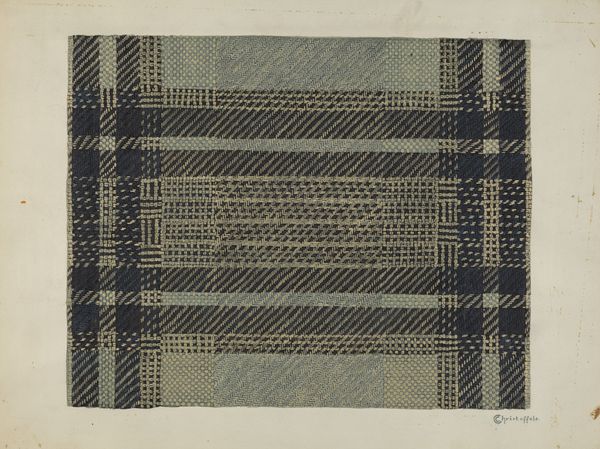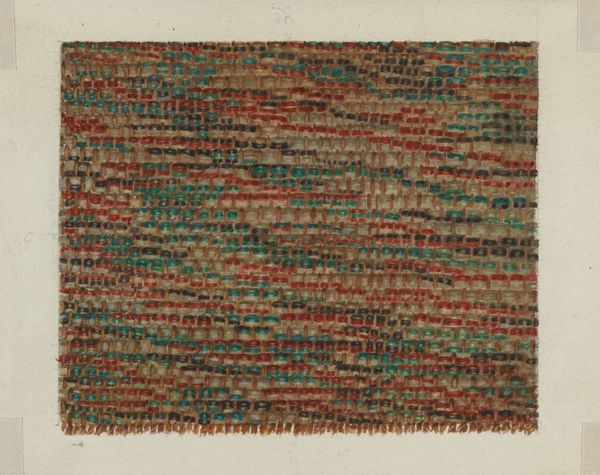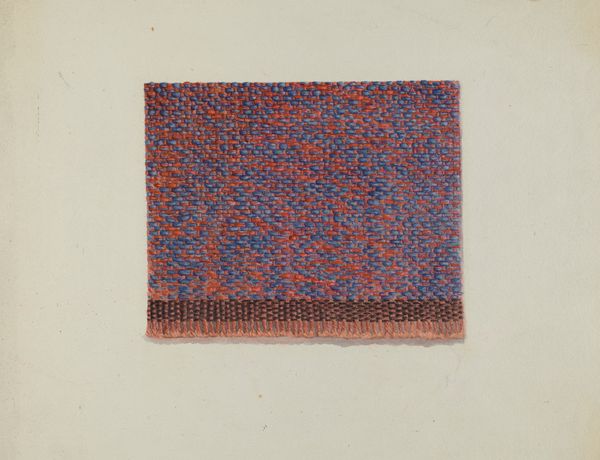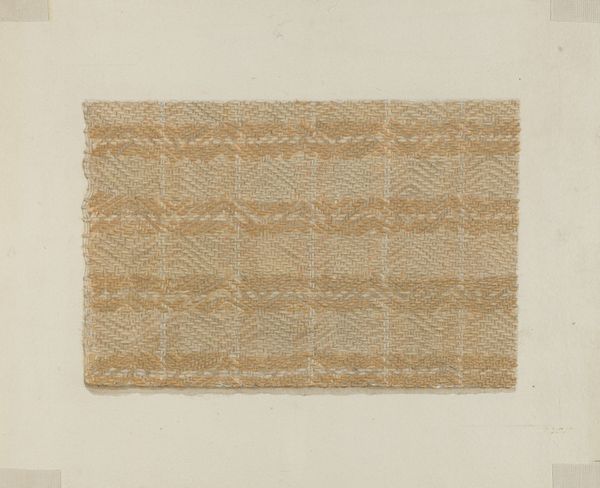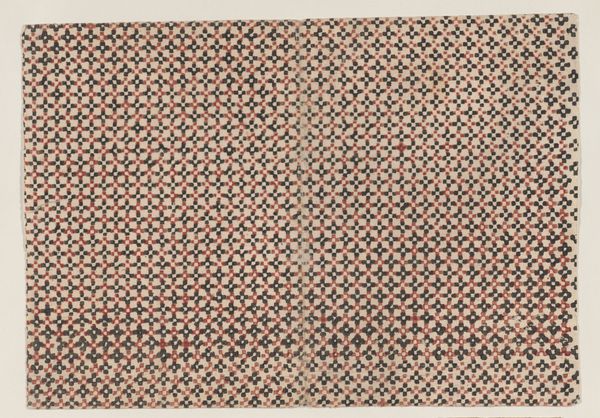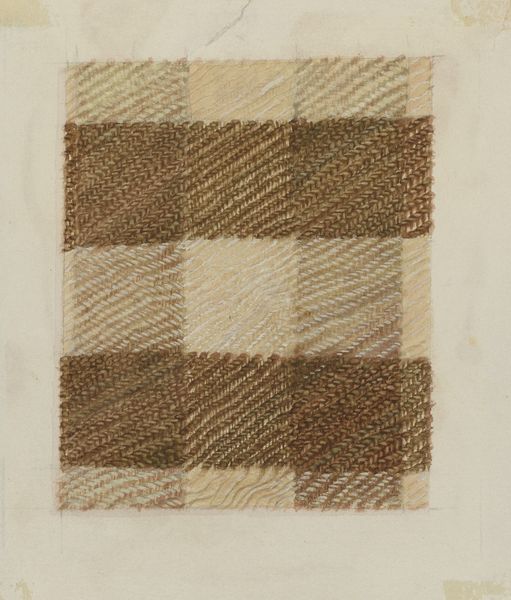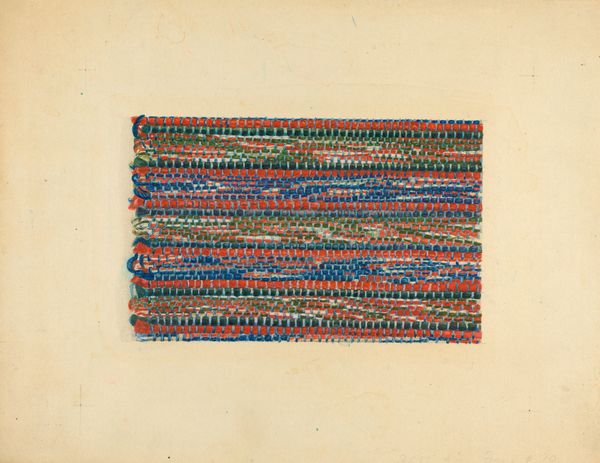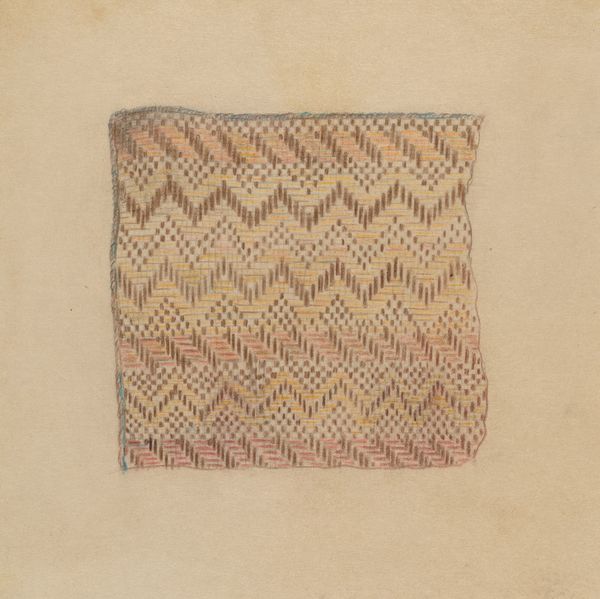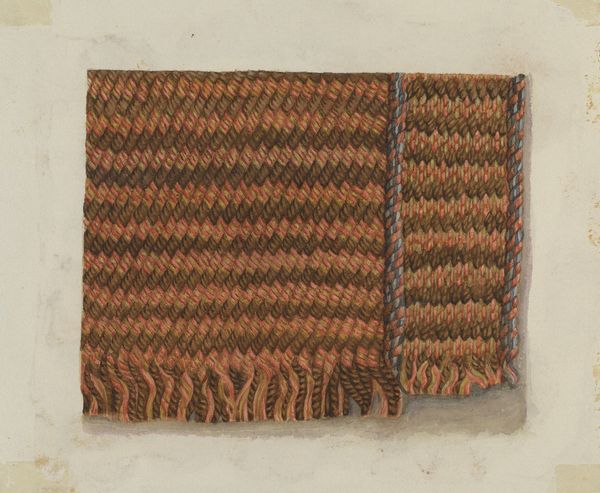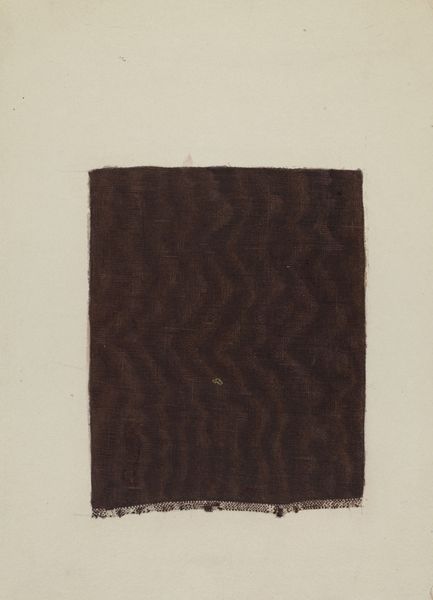
drawing, mixed-media, textile
#
drawing
#
mixed-media
#
pattern
#
textile
#
geometric pattern
#
geometric
Dimensions: overall: 16.4 x 14.1 cm (6 7/16 x 5 9/16 in.)
Copyright: National Gallery of Art: CC0 1.0
Ingrid Selmer-Larsen wove this chair back covering from wool. While the date of this work is unknown, Selmer-Larsen's life spanned much of the twentieth century, a period during which the role of textiles shifted dramatically. For much of history, textiles were a central element of the domestic sphere and their production was a vital skill, most often associated with women's work. However, industrialization slowly displaced hand-crafted textiles and changed their social meaning. By the twentieth century, weaving and other textile arts had become largely divorced from the domestic sphere and repositioned as a form of artistic expression. The Bauhaus movement in Germany was especially important in this transformation. By exploring the cultural and institutional history of textile production, we can understand how Selmer-Larsen's work operates within a shifting field of meanings. We must examine historical archives, craft traditions, and the rise of design schools to understand the place of textiles in modern life.
Comments
No comments
Be the first to comment and join the conversation on the ultimate creative platform.
